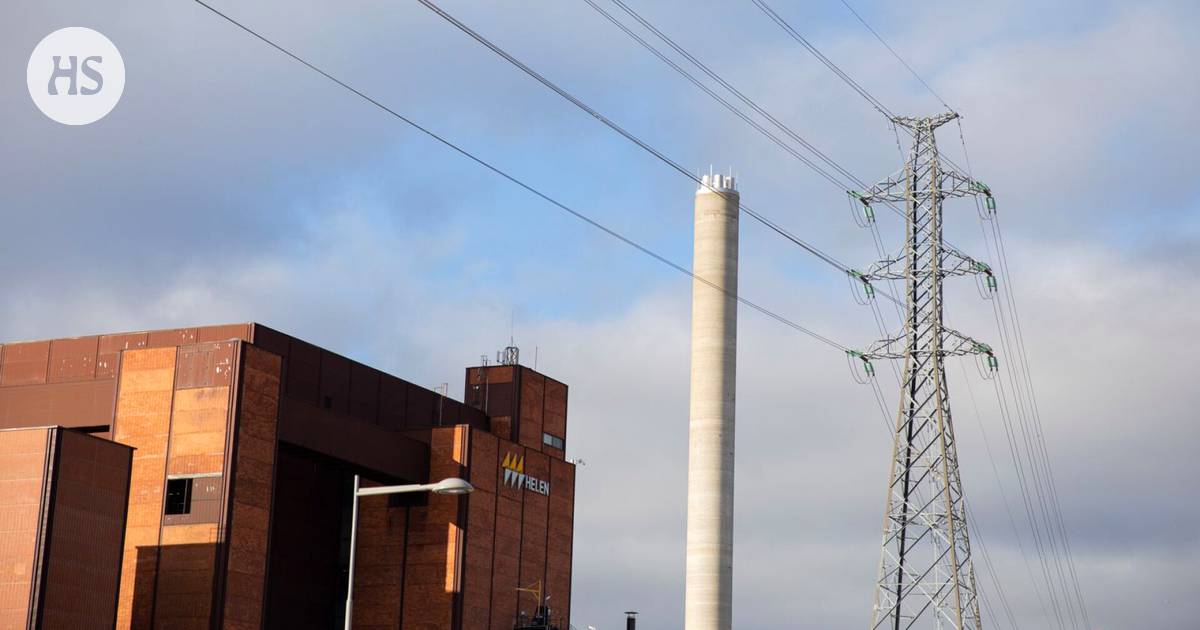Electricity distribution network companies have raised their prices, and consumers have not been able to do anything about it. However, during the current year, anger about the high transmission prices of electricity has changed to concern about the price of electrical energy. HS found out what has happened to electricity transfer prices during this time.
Finns For years, electricity consumers have had a common source of frustration, the electricity transmission price.
Electricity distribution network companies have raised their prices, and consumers have not been able to do anything about it. Transmission prices cannot be tendered, because there are regional monopolies in electricity transmission in Finland, and electricity transmission cannot be bought over them.
Transfer prices have doubled in the 2000s. Back in July 2000, electricity transmission cost an apartment building an average of 4.65 kilowatt hours. In July of this year, the transfer already cost 9.96 per kilowatt hour.
One third of the electricity bill is the price of electricity, one third is the transfer price and one third is the electricity tax. The consumer can only influence the price of electric energy by tendering.
However, during the current year, anger about the high transmission prices of electricity has changed to concern about the price of electrical energy. The price rise in the wholesale electricity market that started last fall has gained more momentum this year, as Russia has further tightened its gas supplies to Europe.
There where the average selling price of electricity has risen for almost a year, the average transmission price of electricity has fallen slightly since the end of last year.
It seems as if the transmission price of electricity and the price of electric energy have changed parts. When the price of electricity has become a common concern, the irritation caused by high transmission prices has been forgotten.
At this point, however, it is worth remembering that the price of electrical energy and the price of electricity transmission are two different things. The price of electric energy is determined in the market, while the transmission price stems from the value of the distribution network and the regulation of network companies.
Thus, over time, the selling price of electricity can fall as quickly as it has risen now. There is no such flexibility in transfer prices, because they are not determined according to market conditions.
Power transfer prices have risen more strongly than consumer prices in Finland for the previous ten years. This has largely been the result of the reform of the Electricity Market Act in 2013.
In it, distribution network companies were allowed not only larger investments than before, but also an even higher level of return on invested capital. The companies have been able to significantly increase the income of their electricity network business with the help of their investments in the network and their capital structure.
According to Asiakastieto, the operating profit percentage of companies in the industry has risen from 13 percent to more than 17 percent between 2018 and 2021, for example. The operating profit percentage describes how much profit companies have left over from their turnover.
The impact of the reform on business profitability is illustrated by the average profit level of Finnish network companies, which has basically been higher than, for example, European energy and telecommunications companies, which – unlike Finnish companies – operate in a free and competitive market.
After the reform, there have been several attempts to deal with the rising transfer prices.
In 2017, a 15 percent increase ceiling for annual transfer price increases was added to the Electricity Market Act. On the other hand, in August 2021, a law came into force that cut both the amount of one-time increases and the level of return on invested capital allowed for network companies.
In addition, at the end of 2021, the Energy Agency made changes to its own control model, which it uses to regulate the pricing of distribution network operations. The changes came into effect this year.
Although the general development of transfer prices turned downward at the end of last year, price increases have continued to be seen in different parts of Finland.
For example, Lehtimäen Sähkö, operating in Alajärvi, has increased the average price of electricity transmission for apartment building residents by approximately 16 percent and for small apartment building residents by approximately 11 percent after July 2021. However, increases of tens of percent like in previous years have not been made anywhere in Finland within the last year.
The Energy Agency estimates that the drop in electricity transmission prices would continue in the coming years, especially in cities. In rural areas, the rise in prices could still continue.
Power transmission there are large regional differences in average prices.
The most expensive average prices, more than 20 cents per kilowatt hour, are currently at Järvi-Suomen Energia from Mikkeli and Kainuu, and Kajave operating in Northern Ostrobothnia.
The cheapest prices, on the other hand, are at Alva Sähköverko, which operates in Jyväskylä, and charges apartment dwellers about 6.7 cents and small house dwellers about 7.2 cents per kilowatt hour.
In Helsinki, Helen Sähköverko, which is responsible for the transfer, the corresponding prices are 10.2 cents for residents of apartment buildings and 8.2 cents for residents of small houses.
Price differences can be large even between neighboring areas.
Oulun Energia charges Oulu apartment building residents 8.5 cents and small house residents about seven cents per kilowatt hour. On the Oulunsalo side, the transmission prices are bouncing, as Oulun Seudun Sähkö, which has made large increases in the electricity network there within a year, is responsible. The company charges about 12 cents per kilowatt-hour for residents of apartment buildings and eight cents for residents of small houses.
In addition, the same distribution network company may charge big differences between regions.
For example, the transfer prices of Caruna Group’s Caruna, which operates in sparsely populated areas, are significantly higher than those of Caruna Espoo, which is concentrated in urban areas. In places, the price of Caruna can be up to almost 89 percent higher than Caruna Espoo.
Correction 12.8. at 10:23. The calculator in the news had some errors regarding the change in transfer prices from last year. At first, the counter showed the price changes of Caruna Espoo and Sipoon Energia incorrectly from last year, for example.
Correction 12.8. at 12:25. In the story, it was wrongly stated that Oulun Seudun Sähkö would have increased the transfer price of apartment building residents by 38 percent after July 2021. The figure was based on price information provided by the Energy Agency, which was incorrect. Oulun Seudun Sähkö has not increased the transfer price paid by apartment building residents after July 2021.
#Energy #Financing #transfer #electricity #easier #huge #differences #companies #calculator #tells #pay #compared #rest #Finland









